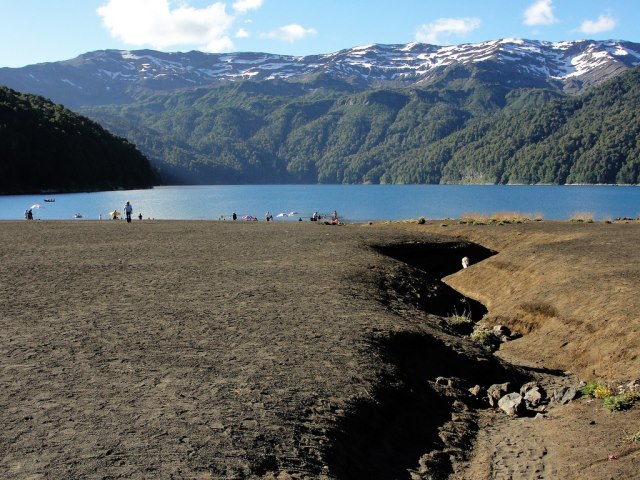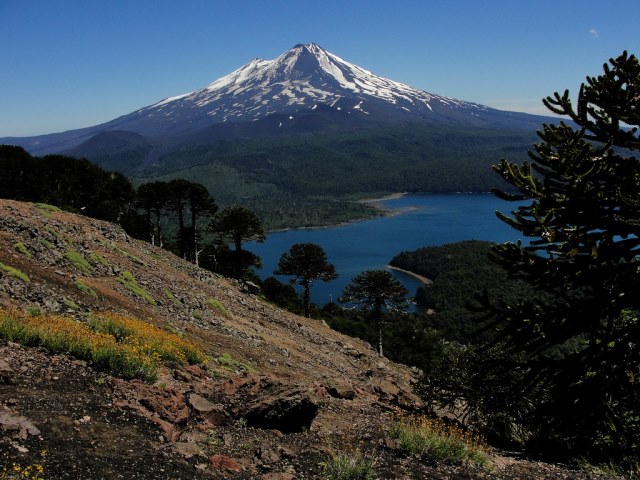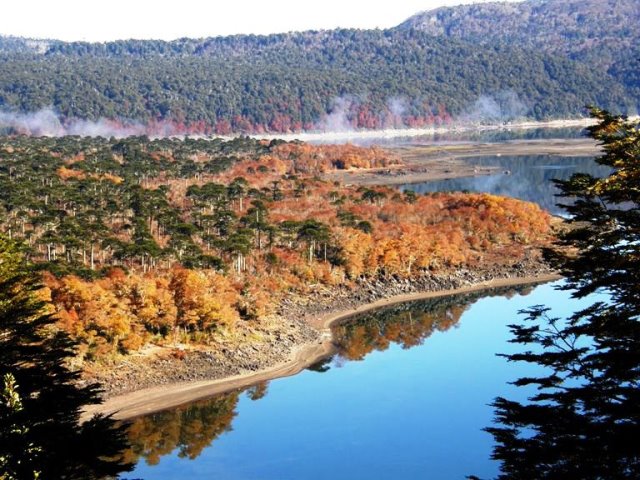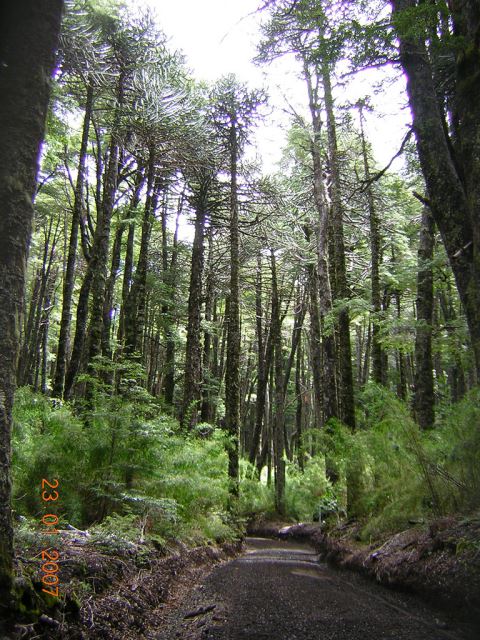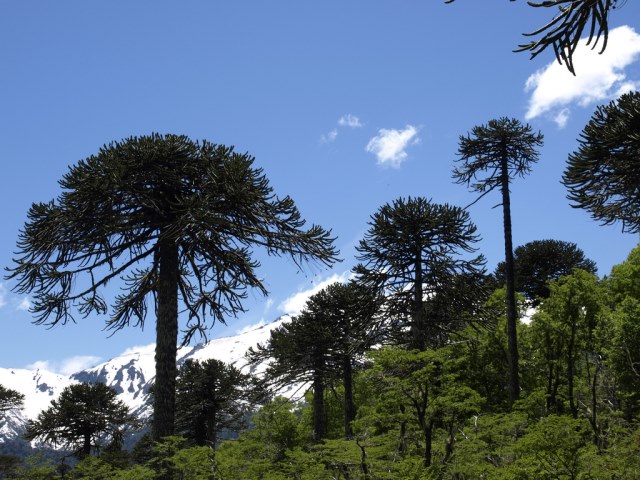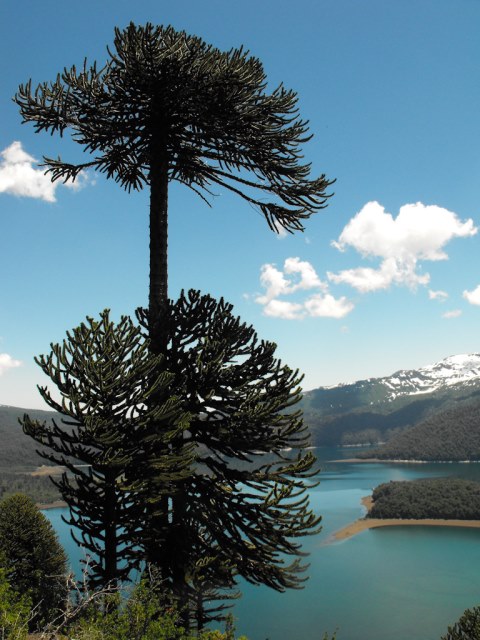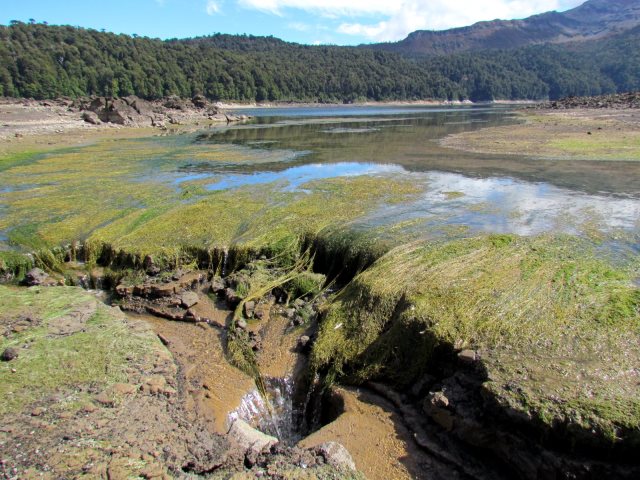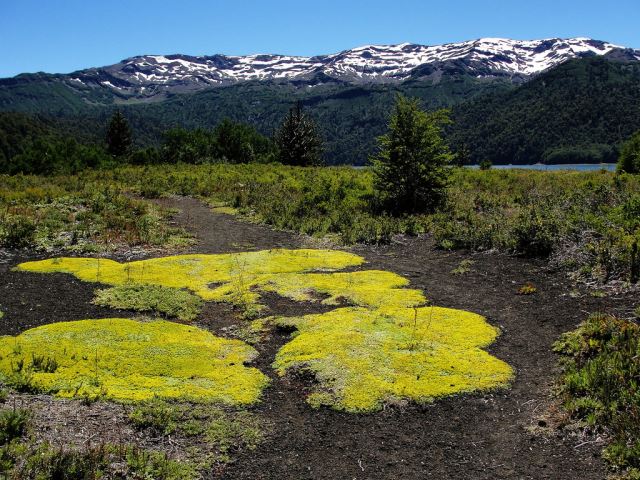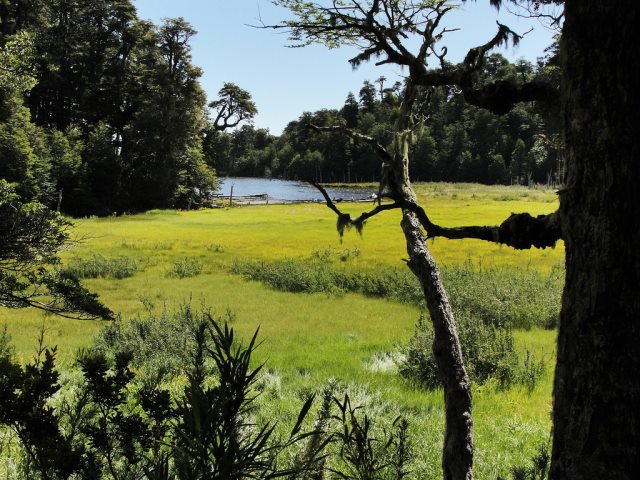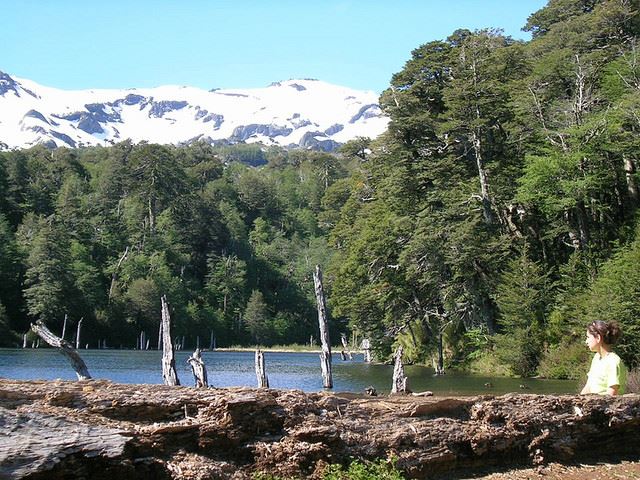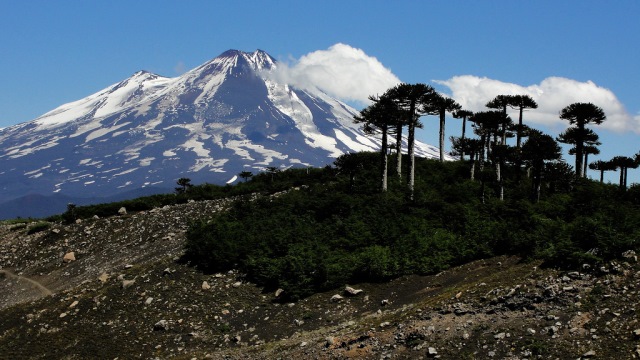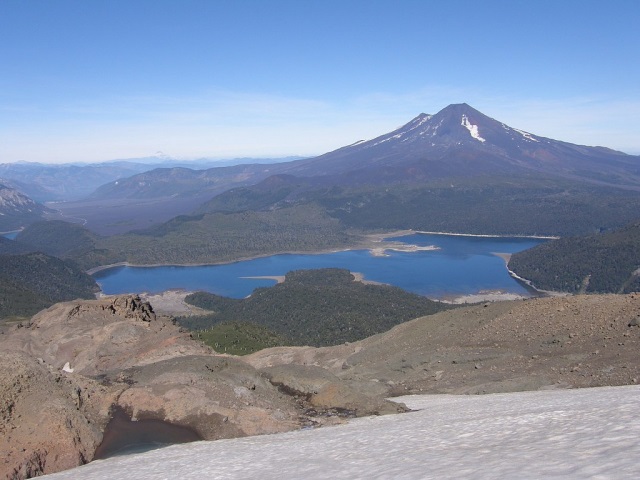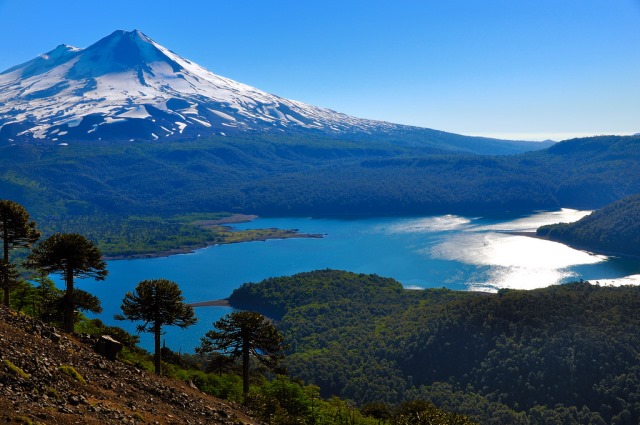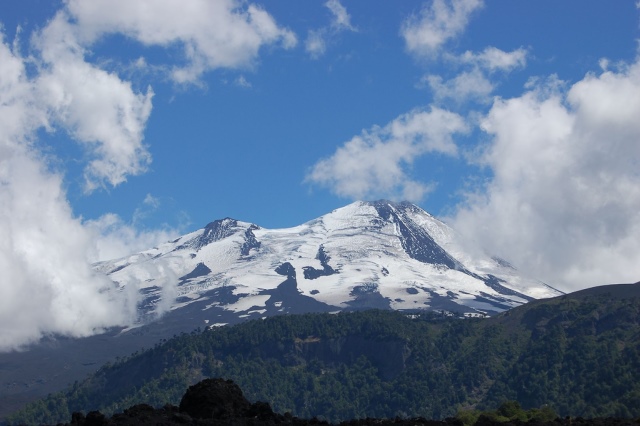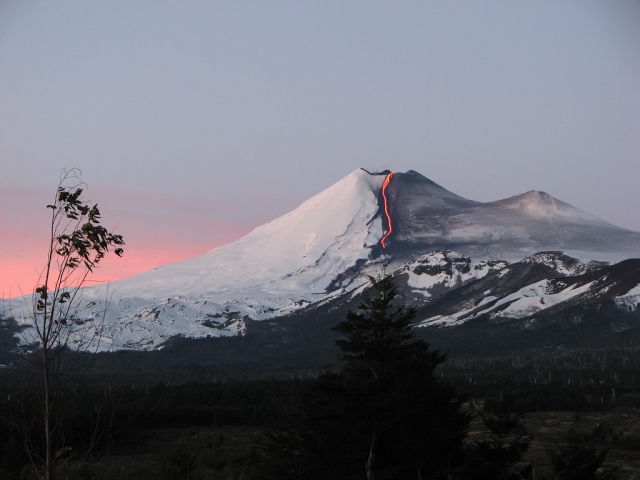Conguillio NP
Key information: Conguillio NP 
- Nestled in the Mapuche heartlands of Araucania, in one of the most volcanically active areas in Chile, lies the ancient landscape of Conguillio NP.
- From the centre of the park rises the huge double cone of Volcan Llaima, towering above the surrounding landscape and circled by an extensive volcanic wasteland, where vast areas have been overwhelmed by the lava of previous explosions.
- The rugged, basalt slopes and peaks of the Chilean Sierra Nevada, coated in thick, antediluvian forest, provide a perfect foil for Llaima's smooth volcanic symmetry.
- Walking here is remote and tough. The standard mountain dangers apply, and route-finding can be very difficult. Come prepared.
Walkopedia rating
- Walkopedia rating83
- Beauty34
- Natural interest18
- Human interest0
- Charisma34
- Negative points3
- Total rating83
- Note: Negs: dreary slog of Llaima
Vital Statistics
- Length: Variable
- Maximum Altitude: 3,125m
- Level of Difficulty: Variable
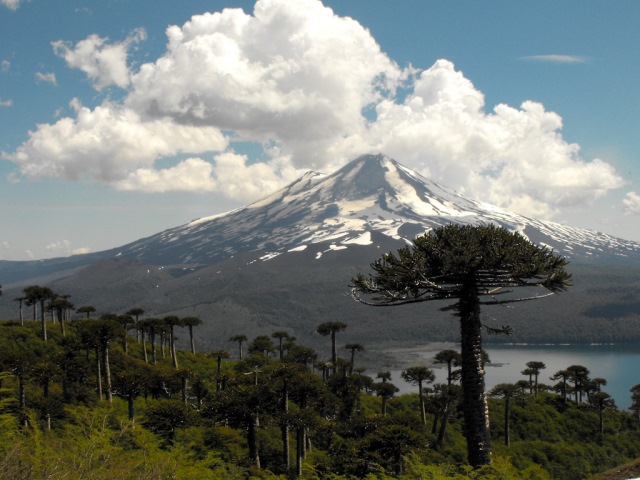
WALK SUMMARY
Parque Nacional Conguillio lies 120km east of the Chilean provincial city of Temuco, the largest in the region of Araucania - the historical heartland of the resilient Mapuche Indians. The Mapuches are renowned for their successful resistance against the might of both the Inca and the Spanish Empires, and the area was not fully incorporated into Chile until as late as 1882.
Temuco, now an ideal base from which to head into Conguillio National Park, was founded in 1881 by Chilean military forces during the occupation of Araucania, quickly flourishing as agricultural production boomed in its environs. Around one fifth of the current population are of Mapuche descent: also notable is the sizeable presence of descendants of Germanic immigrants, which has had a palpable influence on the area's culture.
With its harsh volcanic scenery and unexplored ancient forests, it is easy to see why the dramatic Patagonian national park of Conguillio was chosen as a setting for the BBC's epic series, Walking with Dinosaurs. Set in one of the most volcanically active parts of the southern Andes, this park's most famous landmark is Volcan Llaima, its impressive double cone surrounded by an extensive volcanic wasteland, occasionally interspersed with isolated patches of greenery. Lake shores and highland forests are home to the distinctively shaped "Monkey Puzzle", or Araucaria, tree so symbolic of this region, and their edible nuts have given the park its name: in the Mapudungun language, Conguillio can be translated as "water with pine nuts".
At 3,125m, Volcan Llaima towers above its surrounds. The ascent of this active volcano can be a challenge (a dreary slog, even), with some tiring clambering up steep slopes of snow and rock to the summit. Once here, though, you are far above the clouds, and can gaze out for miles across the mountains of the Andes.
Constant, if generally relatively low key, volcanic activity has blocked the Rio Traful-Traful to form three lakes to the northern and eastern slopes of the volcano. Old lava flows run in barren lava fields to the shores of the largest, Laguna Conguillio, which is bordered on its other three sides by the jagged Sierra Nevada. A walk above Laguna Conguillio climbs up through thick forest to an exposed ridge on the western edge of the Sierra Nevada, reaching the panoramic views of the Sierra Nevada Lookout before turning south and heading back to the park entrance.
The Sierra Nevada Lookout can form a relatively straightforward return walk from the administration centre; alternatively, this can be extended into a strenuous multi-day walk across the Sierra Nevada and to Rio Blanco, with its undeveloped thermal springs.
The least demanding walk in the park is a short but picturesque stroll through the forest to quiet Laguna Captren. From a path looping the small lake you can glimpse the eerie drowned trees in its depths, overwhelmed when Llaima's lava flows blocked the channel of the river Traful-traful in a recent eruption.
Conguillio is an isolated national park, and some of the walking here is tough. In particular, route-finding can be difficult, and you will need to be experienced and confident to walk the longer trails. Water can be scarce in some areas, particularly on the exposed ridges of the Sierra Nevada.
View Larger Map
Other accounts: share your experiences
Your comments on this walk, your experiences and suggestions, and your photos are very welcome. Where appropriate, you will be credited for your contribution.
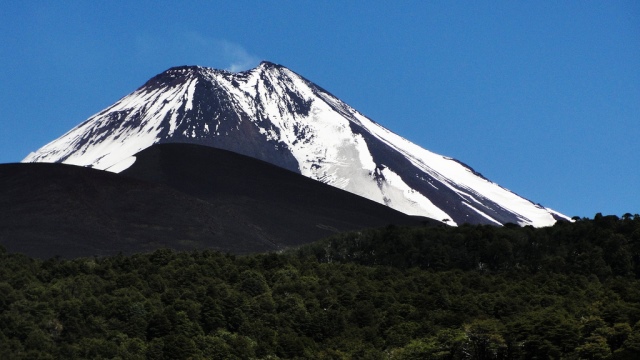
We have a lot of helpful practical information and tips about this walk, covering everything from the best books and maps, to timing and weather, geting there, possible problems, whether you need a guide and where to find them, and useful websites. This section is only open to members.
Membership is FREE AND JOINING TAKES 30 SECONDS. To login or sign up click here
Safety and problems: All walks have inherent risks and potential problems, and many of the walks featured on this website involve significant risks, dangers and problems. Problems of any sort can arise on any walk. This website does not purport to identify any (or all) actual or potential risks, dangers and problems that may relate to any particular walk.
Any person who is considering undertaking this walk should do careful research and make their own assessment of the risks, dangers and possible problems involved. They should also go to “Important information” for further important information.
Anyone planning an expedition to this place should see further important information about this walk.
Safety and problems: All walks have inherent risks and potential problems, and many of the walks featured on this website involve significant risks, dangers and problems. Problems of any sort can arise on any walk. This website does not purport to identify any (or all) actual or potential risks, dangers and problems that may relate to any particular walk.
Any person who is considering undertaking this walk should do careful research and make their own assessment of the risks, dangers and possible problems involved. They should also go to “Important information” for further important information.
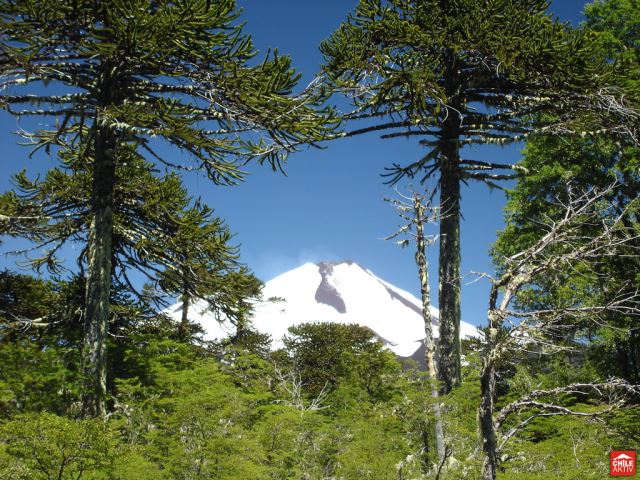
OTHER ACCOUNTS
share your experiences
Add your experiences, suggestions and photos. We would be delighted to receive your writing and ideas (which will be attributed appropriately where published).
Anyone planning an expedition to this place should see further important information about this walk.
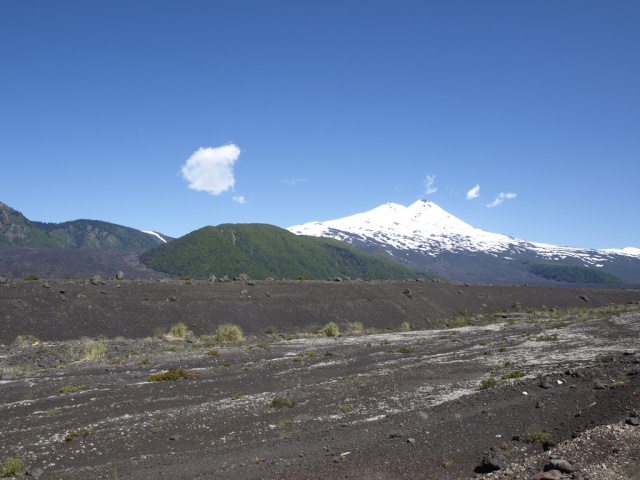
Responsible travel matters, a lot. How you travel will make a real difference - for better or worse. PLEASE consider this when making plans. Read more



